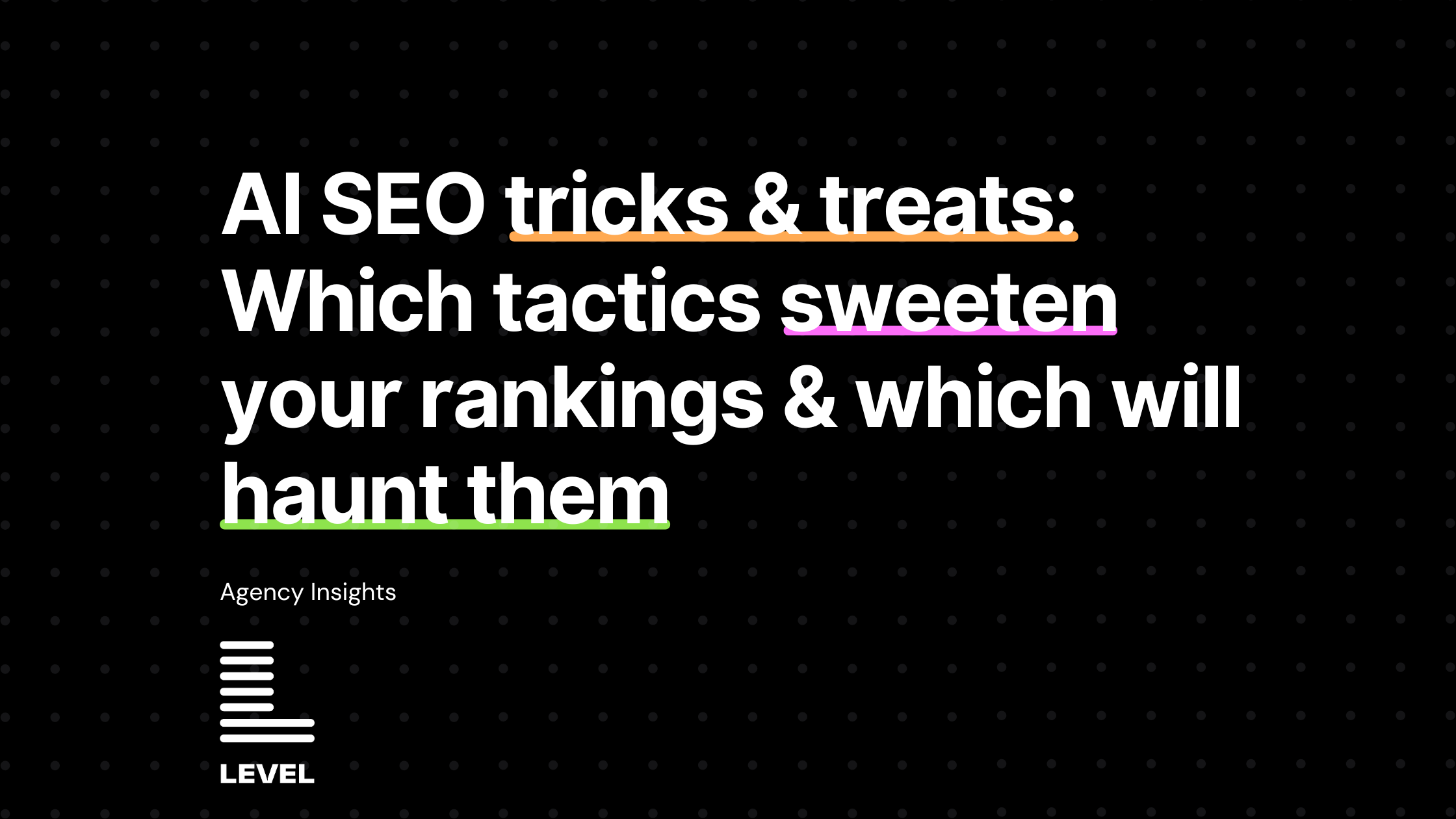 Patrick Patterson,
CEO, Level Agency
Patrick Patterson,
CEO, Level AgencyChatGPT propelled the launch of accessible AI
The AI race is on. Microsoft’s new Bing search engine, backed by ChatGPT’s technology is pushing the envelope in the industry, and bringing AI to the masses. Google’s quick-follow product launch wasn’t unexpected; we knew the popularity of ChatGPT would push these bigger (and many smaller) companies to respond with their own tools, and quickly.
As an agency that prides itself on our Test. Learn. Grow. mindset, we jumped in with both feet to prove a few ways that ChatGPT and similar tools can drive faster results, simplify complexities in our processes, and impact our clients in positive ways. These tools don’t simply take over human work, they jumpstart it. Use them to quickly generate ideas or processes, then apply some old-fashioned human ingenuity to make it great.
Rest assured, this post is written by a human, though we did have a little help along the way.
Two ways AI can impact your workflow today:
There are many, many more than two. But these have quickly become the standard for our agency, and we’re happy to share our secrets.
Keyword research and planning:
Platforms like Google rely on keyword lists to identify user intent and deliver relevant ads. Our analysts typically use anywhere from 1-4 different tools to manage their keyword inventory and strategy. From Google's native keyword planner to Keywords Everywhere extension, there's not lack of ideas feeding our marketers' decisions. AI can make sense of those keywords in ways that humans might not typically see.
TIP: Ask ChatGPT to help with a prompt like “I am going to give you a list of ad groups for a Google Ads campaign. I need you to create keywords for each of these ad groups based on the theme of the ad group listed. Respond to me in an HTML markdown table with one column using the names of the ad groups I am going to give you, and the second column being the keyword related to that ad group. Please give me at least 5 keywords for each ad group. [List of ad groups goes here]” Maybe not comprehensive, but a very good starting point.
Generate outlines for new content:
When staring at a blank document, sometimes a few thought starters help you make connections and tease out your ideas. Feed your content brief into ChatGPT and let it draft your blog, script, or infographic outline. This output is not meant to be the final version. Once you have the architecture or first draft of your creative, take that back to the team and evaluate what works and what doesn’t. Draft the final version with your experts or risk irrelevant, duplicative content. Remember: The point of original writing is to share your point of view and produce something useful, not summarize available information.
TIP: Ask the prompt to serve you multiple versions for A/B testing, or different tones of voice. Try a prompt like: "Write the outline of a blog about trends impacting the manufacturing industry, including rising costs and training on new technology. This blog should target an audience of leaders in the industry. Now, give me 3 headlines to choose from."
AI isn’t a fad – Adopt or Flop
Used correctly, AI is simply a way to increase efficiency and accelerate new, valuable ideas.
Just a month ago, only 13% of businesses identified that they were using AI today. 38% projected they’d be using it within 3 months. While schools and search engines are battling to prevent AI-generated content from overwhelming human-created content, many companies — ours included —see an opportunity to smooth out processes and complexity that their teams face daily. I should add: we’ve been using AI to accelerate human work for years. Google and Meta bake it into their audience models to make strategic recommendations, and many business tools that we rely on use AI or Machine Learning to improve their results as well (hello, Google Image Search). ChatGPT and similar apps present a new and unfamiliar face AI, one that feels revolutionary for good reason. But it won’t feel that way for long as more and more companies adapt and adopt.
Our take: Companies who embrace these tools and apply them in creative ways will become industry leaders. Those who over-rely on manual processes simply won’t be able to compete with AI’s raw efficiency. Challenge accepted.











